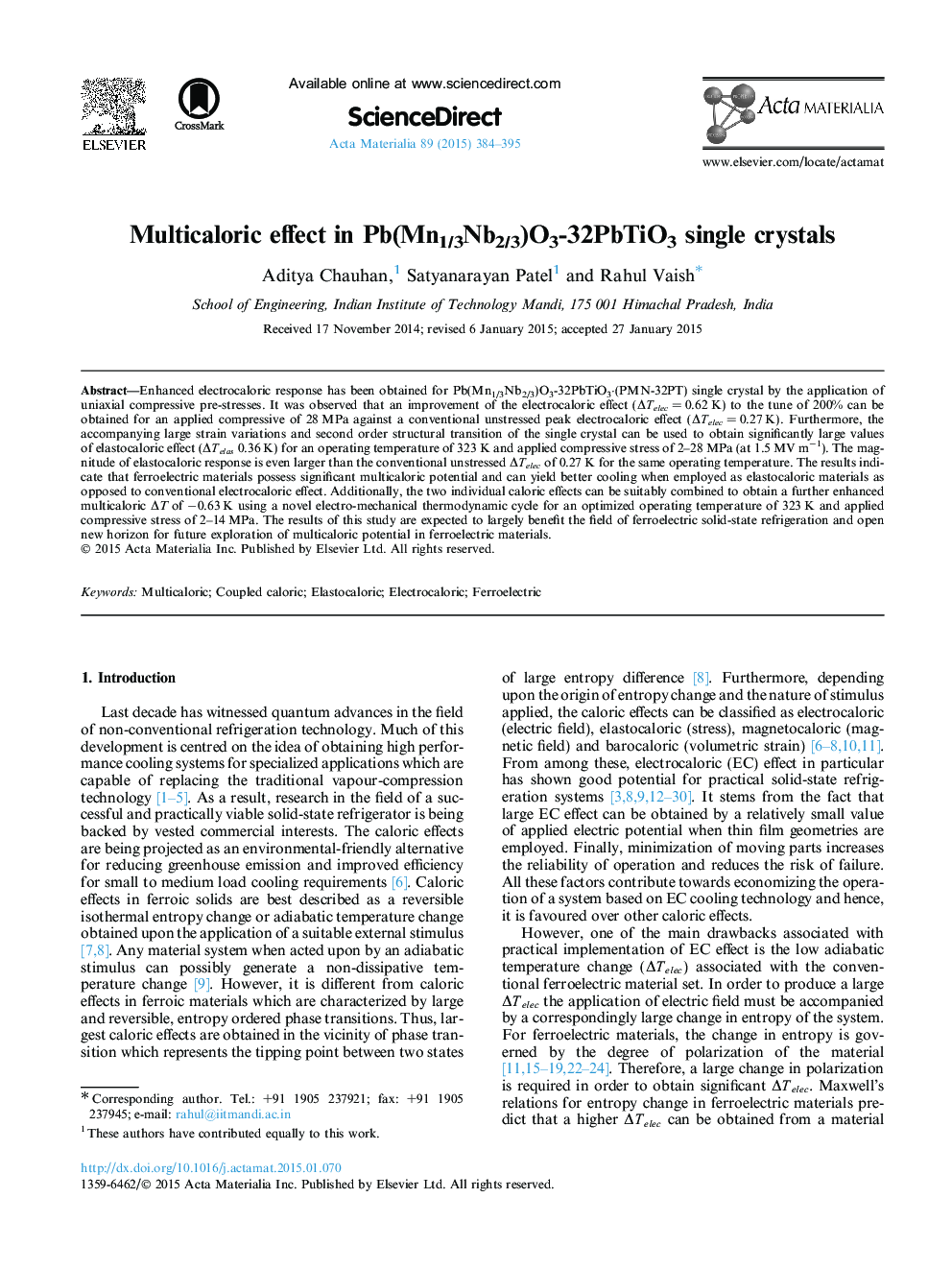| Article ID | Journal | Published Year | Pages | File Type |
|---|---|---|---|---|
| 7880432 | Acta Materialia | 2015 | 12 Pages |
Abstract
Enhanced electrocaloric response has been obtained for Pb(Mn1/3Nb2/3)O3-32PbTiO3·(PMN-32PT) single crystal by the application of uniaxial compressive pre-stresses. It was observed that an improvement of the electrocaloric effect (ÎTelec = 0.62 K) to the tune of 200% can be obtained for an applied compressive of 28 MPa against a conventional unstressed peak electrocaloric effect (ÎTelec = 0.27 K). Furthermore, the accompanying large strain variations and second order structural transition of the single crystal can be used to obtain significantly large values of elastocaloric effect (ÎTelas 0.36 K) for an operating temperature of 323 K and applied compressive stress of 2-28 MPa (at 1.5 MV mâ1). The magnitude of elastocaloric response is even larger than the conventional unstressed ÎTelec of 0.27 K for the same operating temperature. The results indicate that ferroelectric materials possess significant multicaloric potential and can yield better cooling when employed as elastocaloric materials as opposed to conventional electrocaloric effect. Additionally, the two individual caloric effects can be suitably combined to obtain a further enhanced multicaloric ÎT of â0.63 K using a novel electro-mechanical thermodynamic cycle for an optimized operating temperature of 323 K and applied compressive stress of 2-14 MPa. The results of this study are expected to largely benefit the field of ferroelectric solid-state refrigeration and open new horizon for future exploration of multicaloric potential in ferroelectric materials.
Related Topics
Physical Sciences and Engineering
Materials Science
Ceramics and Composites
Authors
Aditya Chauhan, Satyanarayan Patel, Rahul Vaish,
